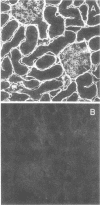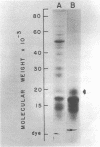Abstract
Tritium-labeled, water-soluble components of Streptococcus pyogenes type M6 absorbed to cardiac tissue in vitro. Tissue binding was time dependent, saturable, and reversible. Chromatography of the crude bacterial extract on Bio-Gel P-300 indicated a molecular weight greater than 300,000 for the heart-binding component. Sodium dodecyl sulfate (SDS) dissociated this aggregate into a protein of 18,000 to 20,000 daltons as determined by Sephacryl S-200 chromatography and SDS-polyacrylamide disc gel electrophoresis. The tissue-binding protein was also purified from streptococcal extracts by absorption to immobilized heart components. SDS-polyacrylamide gel electrophoresis of the protein desorbed from tissue revealed a radioactive band of 19,000 daltons. Indirect immunofluorescence tests on cardiac tissue treated with streptococcal extract showed an accumulation of a bacterial antigen on the sarcolemmal sheaths. Streptococcal components also adsorbed to basement membranes of kidney. Antisera prepared to isolated cytoplasmic membranes and water-soluble extracts of S. pyogenes type M6 were the most sensitive reagents for the detection of bacterial components bound to tissue. Antisera prepared to isolated cell walls and to intact bacteria were weakly reactive in these assays.
Full text
PDF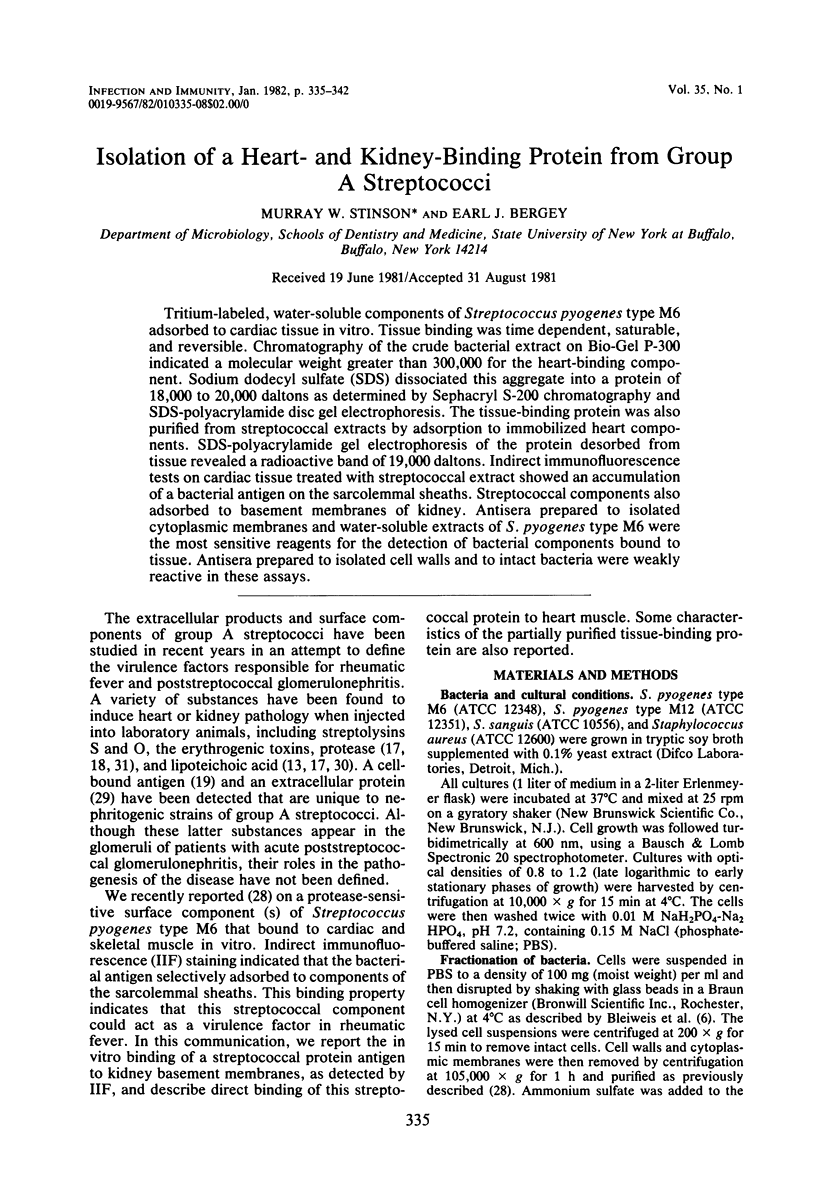
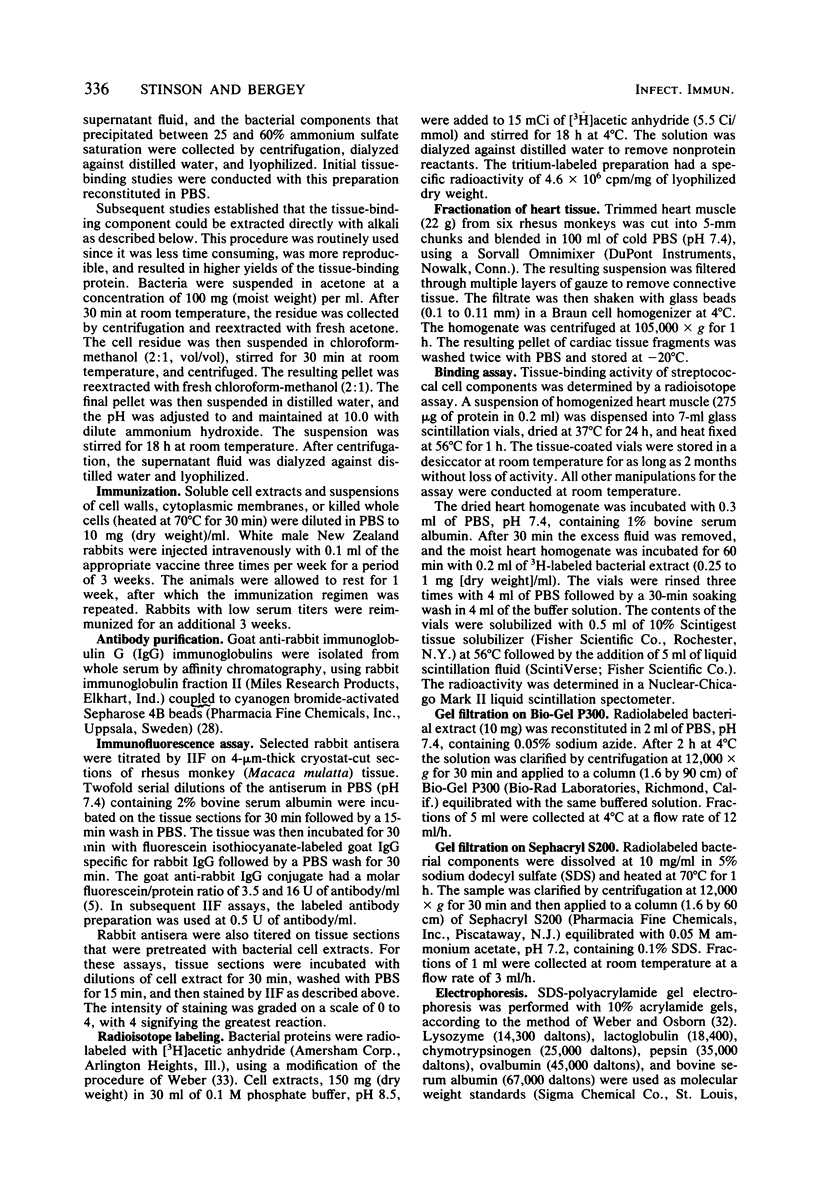
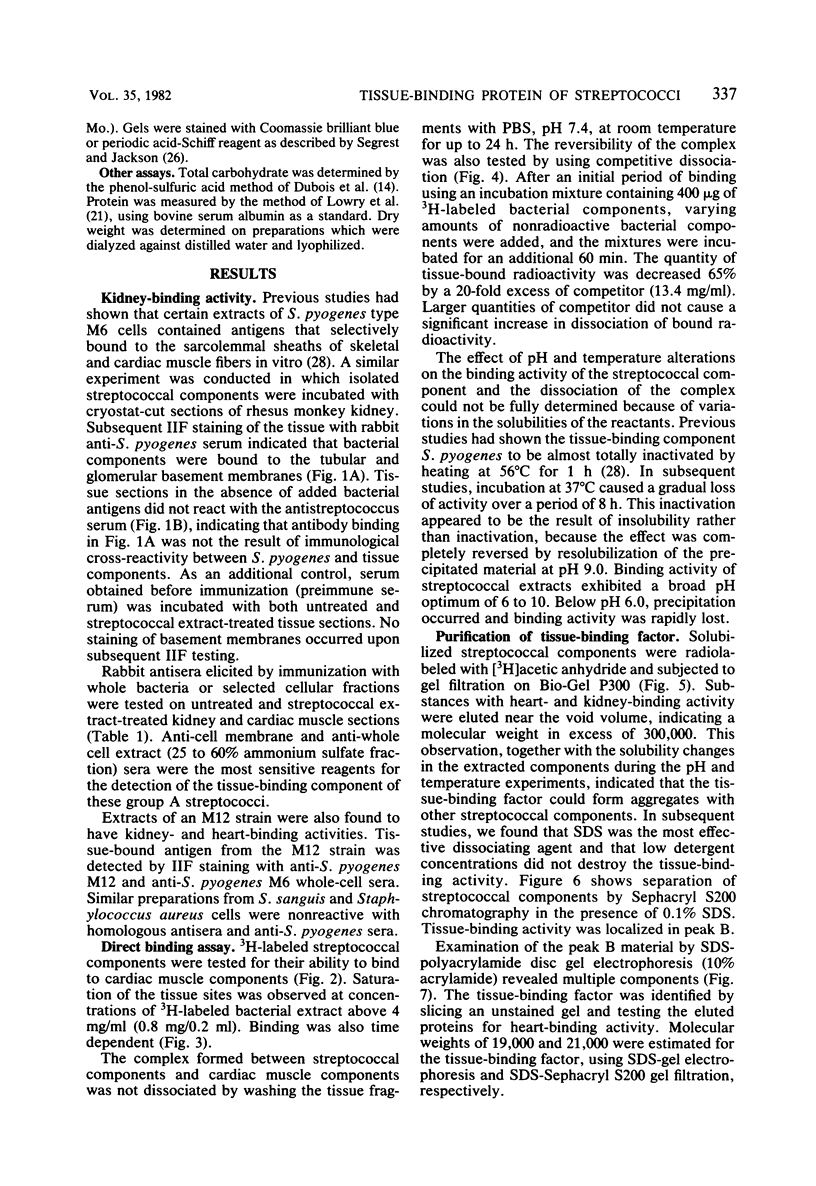
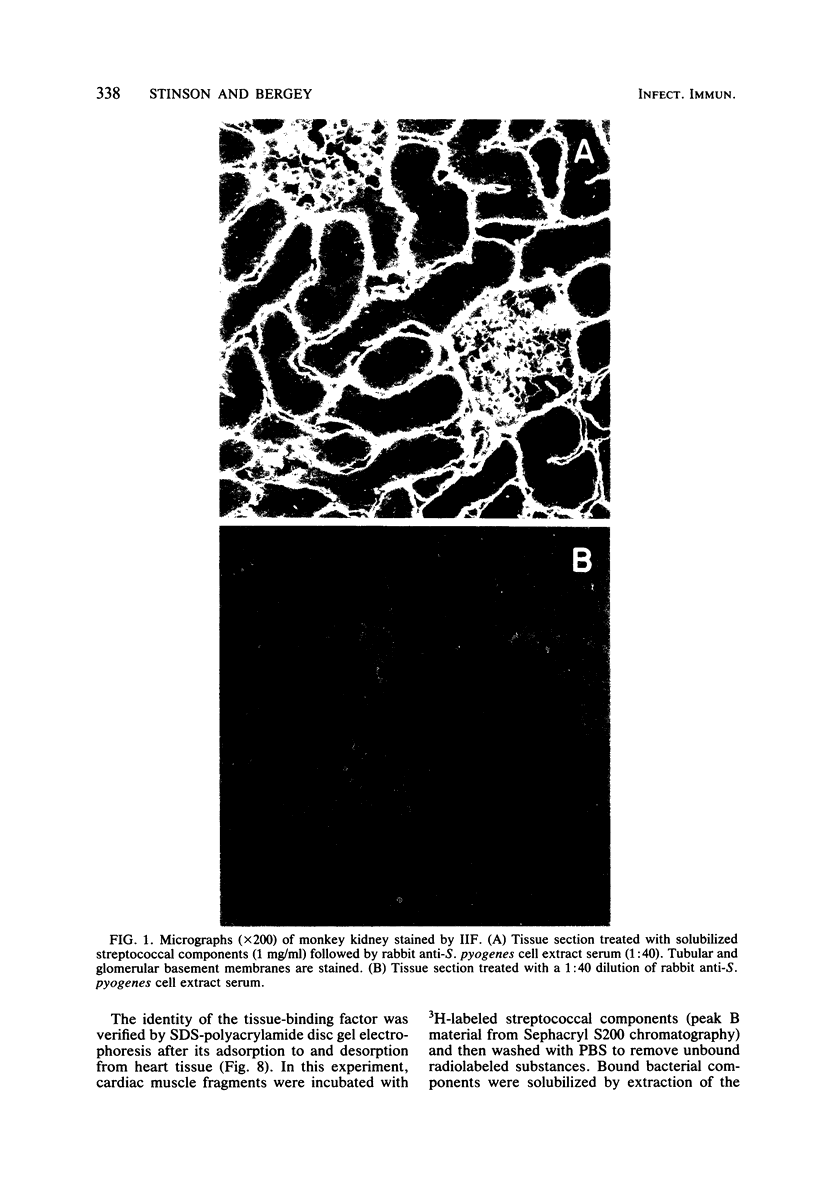
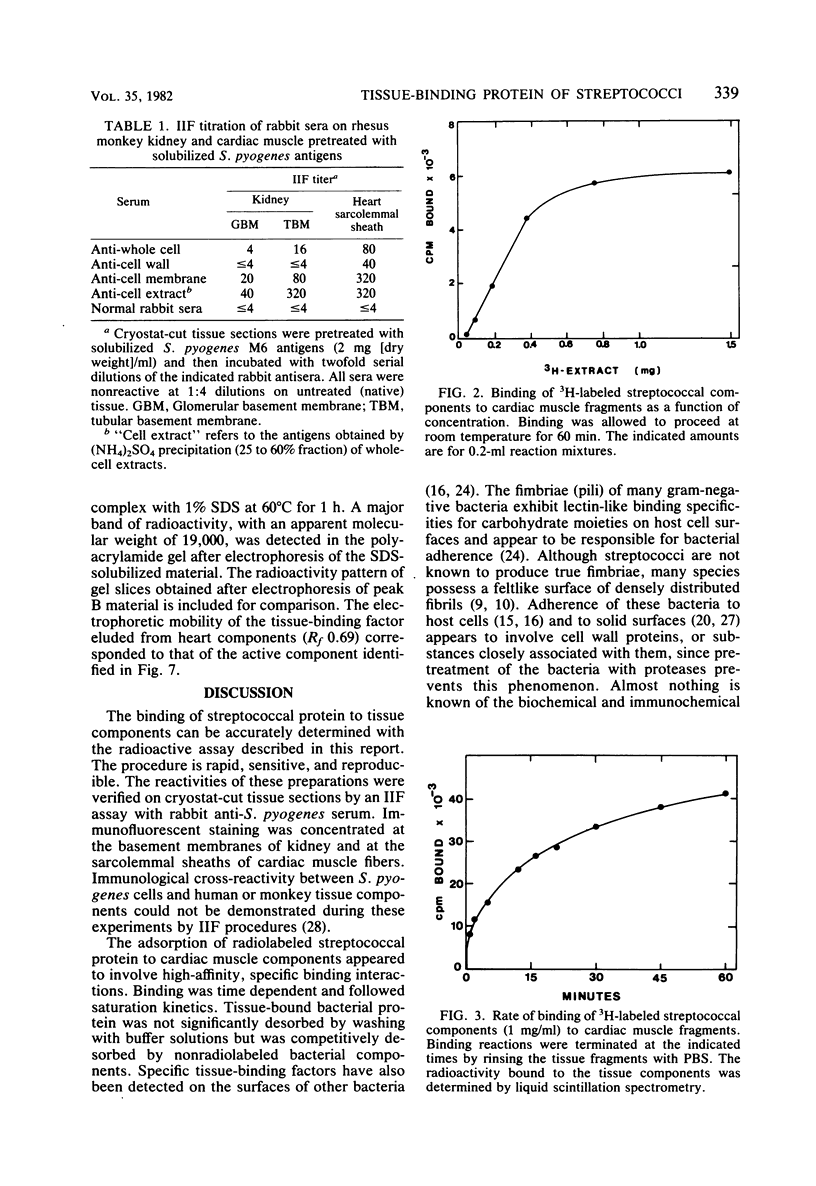
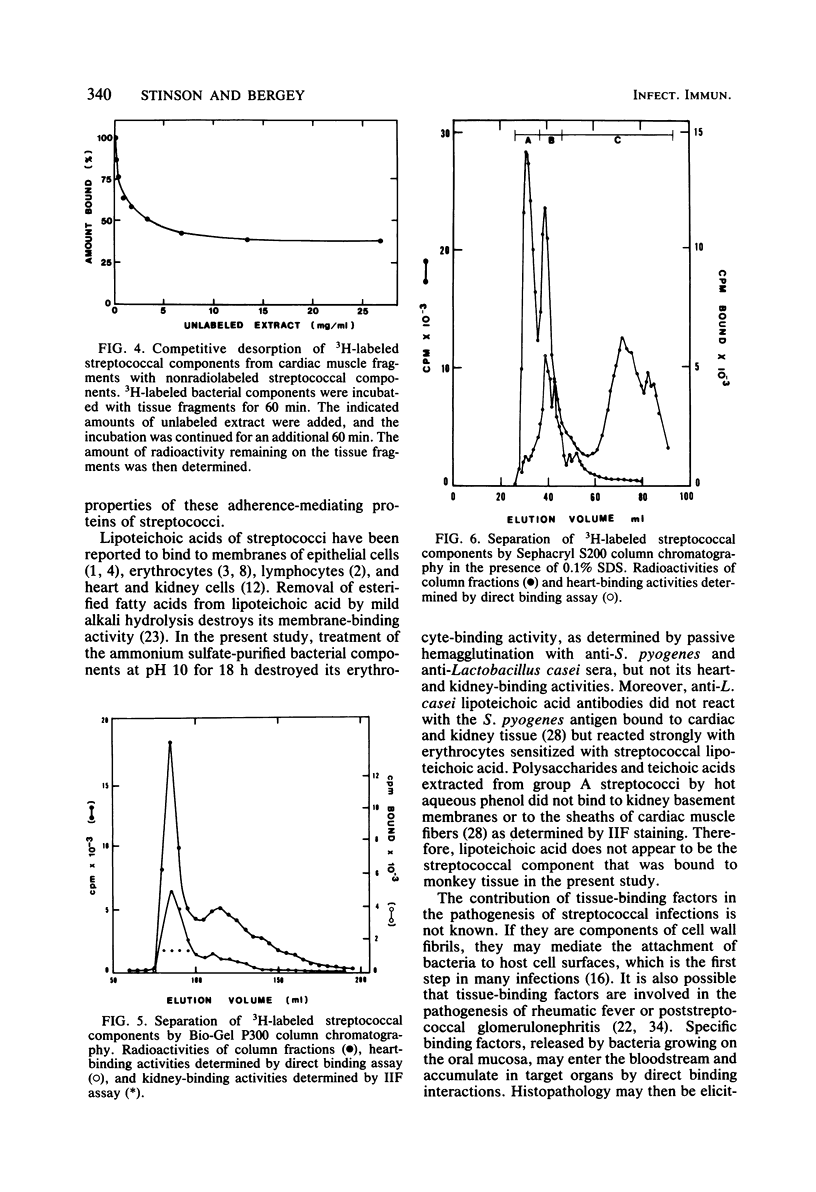
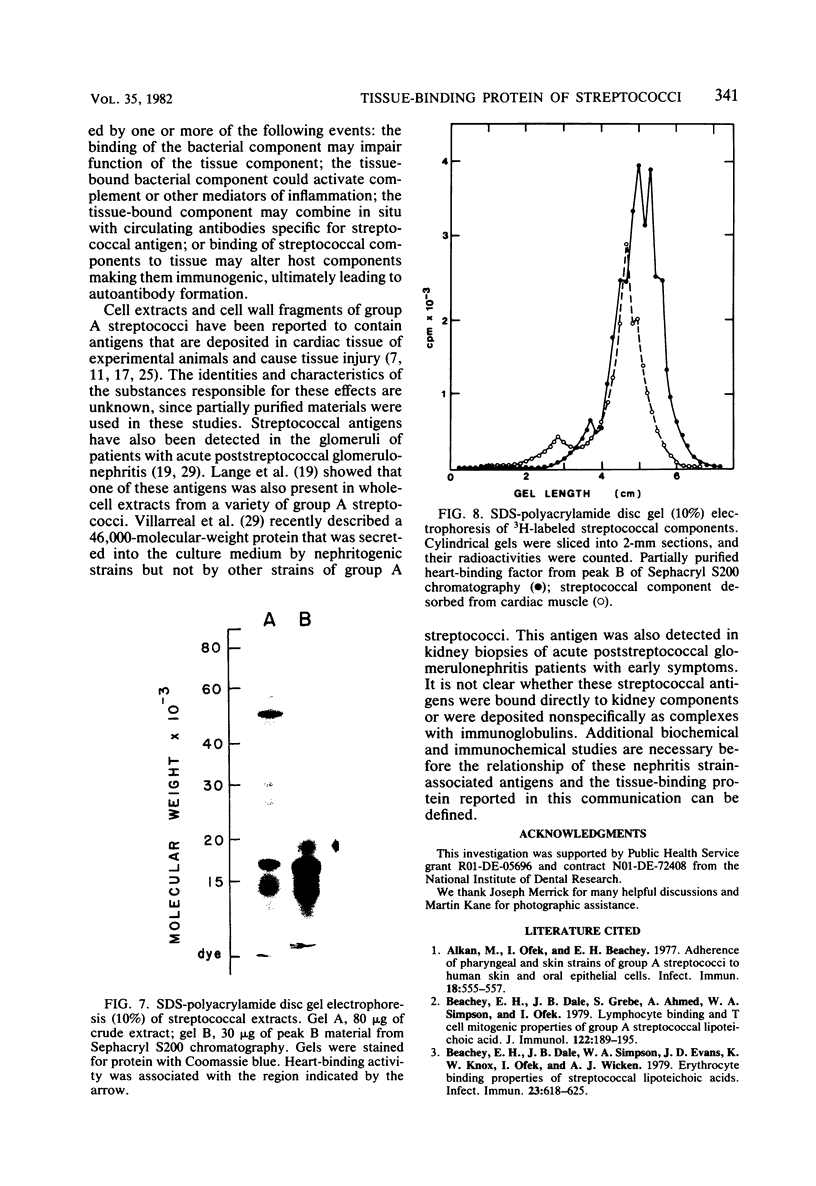
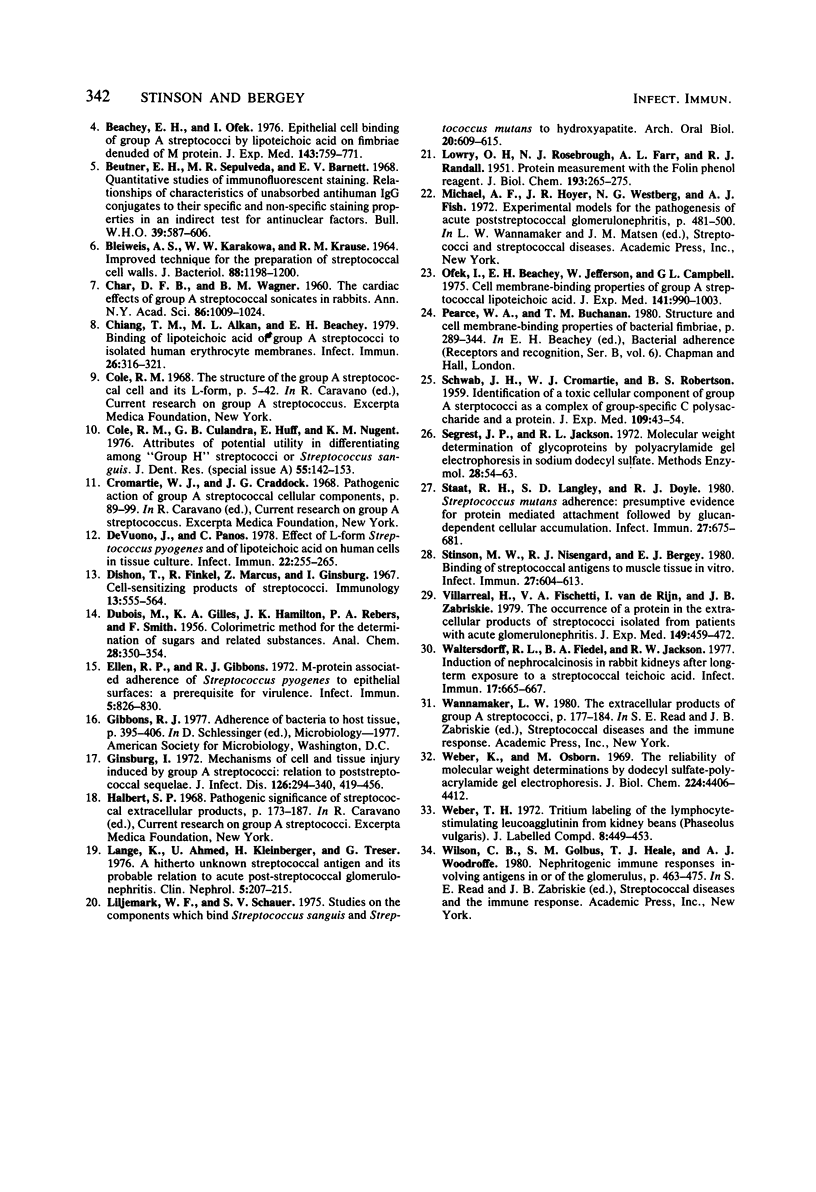
Images in this article
Selected References
These references are in PubMed. This may not be the complete list of references from this article.
- Alkan M., Ofek I., Beachey E. H. Adherence pharyngeal and skin strains of group A streptococci to human skin and oral epithelial cells. Infect Immun. 1977 Nov;18(2):555–557. doi: 10.1128/iai.18.2.555-557.1977. [DOI] [PMC free article] [PubMed] [Google Scholar]
- BLEIWEIS A. S., KARAKAWA W. W., KRAUSE R. M. IMPROVED TECHNIQUE FOR THE PREPARATION OF STREPTOCOCCAL CELL WALLS. J Bacteriol. 1964 Oct;88:1198–1200. doi: 10.1128/jb.88.4.1198-1200.1964. [DOI] [PMC free article] [PubMed] [Google Scholar]
- Beachey E. H., Dale J. B., Grebe S., Ahmed A., Simpson W. A., Ofek I. Lymphocytes binding and T cell mitogenic properties of group A streptococcal lipoteichoic acid. J Immunol. 1979 Jan;122(1):189–195. [PubMed] [Google Scholar]
- Beachey E. H., Dale J. B., Simpson W. A., Evans J. D., Knox K. W., Ofek I., Wicken A. J. Erythrocyte binding properties of streptococcal lipoteichoic acids. Infect Immun. 1979 Mar;23(3):618–625. doi: 10.1128/iai.23.3.618-625.1979. [DOI] [PMC free article] [PubMed] [Google Scholar]
- Beachey E. H., Ofek I. Epithelial cell binding of group A streptococci by lipoteichoic acid on fimbriae denuded of M protein. J Exp Med. 1976 Apr 1;143(4):759–771. doi: 10.1084/jem.143.4.759. [DOI] [PMC free article] [PubMed] [Google Scholar]
- Beutner E. H., Sepulveda M. R., Barnett E. V. Quantitative studies of immunofluorescent staining. Relationships of characteristics of unabsorbed antihuman IgG conjugates to their specific and non-specific staining properties in an indirect test for antinuclear factors. Bull World Health Organ. 1968;39(4):587–606. [PMC free article] [PubMed] [Google Scholar]
- CHAR D. F., WAGNER B. M. The cardiac effects of group A streptococcal sonicates in rabbits. Ann N Y Acad Sci. 1960 Jun 30;86:1009–1024. doi: 10.1111/j.1749-6632.1960.tb42857.x. [DOI] [PubMed] [Google Scholar]
- Chiang T. M., Alkan M. L., Beachey E. H. Binding of lipoteichoic acid of group A streptococci to isolated human erythrocyte membranes. Infect Immun. 1979 Oct;26(1):316–321. doi: 10.1128/iai.26.1.316-321.1979. [DOI] [PMC free article] [PubMed] [Google Scholar]
- DeVuono J., Panos C. Effect of L-form Streptococcus pyogenes and of lipoteichoic acid on human cells in tissue culture. Infect Immun. 1978 Oct;22(1):255–265. doi: 10.1128/iai.22.1.255-265.1978. [DOI] [PMC free article] [PubMed] [Google Scholar]
- Dishon T., Finkel R., Marcus Z., Ginsburg I. Cell-sensitizing products of streptococci. Immunology. 1967 Dec;13(6):555–564. [PMC free article] [PubMed] [Google Scholar]
- Ellen R. P., Gibbons R. J. M protein-associated adherence of Streptococcus pyogenes to epithelial surfaces: prerequisite for virulence. Infect Immun. 1972 May;5(5):826–830. doi: 10.1128/iai.5.5.826-830.1972. [DOI] [PMC free article] [PubMed] [Google Scholar]
- Ginsburg I. Mechanisms of cell and tissue injury induced by group A streptococci: relation to poststreptococcal sequelae. J Infect Dis. 1972 Sep;126(3):294–340. doi: 10.1093/infdis/126.3.294. [DOI] [PubMed] [Google Scholar]
- LOWRY O. H., ROSEBROUGH N. J., FARR A. L., RANDALL R. J. Protein measurement with the Folin phenol reagent. J Biol Chem. 1951 Nov;193(1):265–275. [PubMed] [Google Scholar]
- Lange K., Ahmed U., Kleinberger H., Treser G. A hitherto unknown streptococcal antigen and its probable relation to acute poststreptococcal glomerulonephritis. Clin Nephrol. 1976 May;5(5):207–215. [PubMed] [Google Scholar]
- Liljemark W. F., Schauer S. V. Studies on the bacterial components which bind Streptococcus sanguis and Streptococcus mutans to hydroxyapatite. Arch Oral Biol. 1975 Sep;20(9):609–615. doi: 10.1016/0003-9969(75)90082-5. [DOI] [PubMed] [Google Scholar]
- Ofek I., Beachey E. H., Jefferson W., Campbell G. L. Cell membrane-binding properties of group A streptococcal lipoteichoic acid. J Exp Med. 1975 May 1;141(5):990–1003. doi: 10.1084/jem.141.5.990. [DOI] [PMC free article] [PubMed] [Google Scholar]
- SCHWAB J. H., CROMARTIE W. J., ROBERSON B. S. Identification of a toxic cellular component of group A streptococci as a complex of group-specific C polysaccharide and a protein. J Exp Med. 1959 Jan 1;109(1):43–54. doi: 10.1084/jem.109.1.43. [DOI] [PMC free article] [PubMed] [Google Scholar]
- Staat R. H., Langley S. D., Doyle R. J. Streptococcus mutans adherence: presumptive evidence for protein-mediated attachment followed by glucan-dependent cellular accumulation. Infect Immun. 1980 Feb;27(2):675–681. doi: 10.1128/iai.27.2.675-681.1980. [DOI] [PMC free article] [PubMed] [Google Scholar]
- Stinson M. W., Nisengard R. J., Bergey E. J. Binding of streptococcal antigens to muscle tissue in vitro. Infect Immun. 1980 Feb;27(2):604–613. doi: 10.1128/iai.27.2.604-613.1980. [DOI] [PMC free article] [PubMed] [Google Scholar]
- Villarreal H., Jr, Fischetti V. A., van de Rijn I., Zabriskie J. B. The occurrence of a protein in the extracellular products of streptococci isolated from patients with acute glomerulonephritis. J Exp Med. 1979 Feb 1;149(2):459–472. doi: 10.1084/jem.149.2.459. [DOI] [PMC free article] [PubMed] [Google Scholar]
- Waltersdorff R. L., Fiedel B. A., Jackson R. W. Induction of nephrocalcinosis in rabbit kidneys after long-term exposure to a streptococcal teichoic acid. Infect Immun. 1977 Sep;17(3):665–667. doi: 10.1128/iai.17.3.665-667.1977. [DOI] [PMC free article] [PubMed] [Google Scholar]
- Weber K., Osborn M. The reliability of molecular weight determinations by dodecyl sulfate-polyacrylamide gel electrophoresis. J Biol Chem. 1969 Aug 25;244(16):4406–4412. [PubMed] [Google Scholar]



